The CT Hall of Fame honors the leaders whose contributions have helped to grow and enhance the $487 billion consumer technology industry. Each year, we celebrate our vibrant history at this awards dinner. Created in 2000, the CT Hall of Fame will grow to 279 members with the addition of 12 new honorees. The classes of 2020 and 2021 will be inducted together since the dinner was postponed last year due to the pandemic.
This group will join inventors, promoters, entrepreneurs, journalists and industry advocates whose visions have shaped the world. These leaders have created, promoted, merchandised and advanced the products, services and technologies that empower and inspire global consumers.
The Hall of Fame program serves as a bridge from the past to the present, enabling a new generation of entrepreneurs to build on the foundation laid by their colleagues before them.
We also are celebrating the 2020 and 2021 Innovation Entrepreneur Award honorees. This program recognizes the extraordinary contributions of executives, small businesses and startups. And CES is the home of innovation. Come see the potential of technology to connect the world and empower each of us at CES 2022.
Gary Shapiro,
President and CEO
2021 CT Hall of Fame Judges
Lancelot Braithwaite
Berger-Braithwaite Labs, 2011 HOF
Carol Campbell
Technology Insider Group
Henry Chiarelli
Chiarelli & Associates, 2019 HOF
Deena Ghazarian
Austere
Jeremy Kaplan
Future
Mara Lewis
ID8 Innovation
Daniel Pidgeon
Sears Home Services
Megan Pollock
Samsung
John Shalam
VOXX International, 2009 HOF
Murray Slovick
Intelligent Content Services
Steve Smith
Formerly TWICE, 2016 HOF
John Taylor
LG
Stewart Wolpin
Tech historian
2020 CT Hall of Fame Judges
Rick Albuck
2020 Companies
Melissa Andresko
Lutron
Tom Campbell
Video and Audio Center, 2015 HOF
Rob Calem
Journalist, i3
Marge Costello
Costello Communications
Bob Fields
Hibersense
Pam Golden
GLA Communications
Cheryl Goodman
Sony Electronics
Suzanne Kantra
Techlicious
Nancy Klosek
Dealerscope
Steve Smith
Formerly TWICE
Greg Tarr
HD Guru.com
Steve Tiffen
Tiffen
Lois Whitman
HWH New Media
2020 and 2021 Innovation Entrepreneur Award Judges
Dave Arland
Arland Communications
Kim Folsom
Founders First Capital Partners LLC
Connie Guglielmo
CNET
Pam Golden
GLA Communications
Robert Heiblim
bluesalve partners
Suzanne Kantra
Techlicious
Jeremy Kaplan
Future
Mara Lewis
ID8 Innovation
Frank Parrotto
Matrix Advisors
John Quain
NYT, Tom’s Guide
Larry Richenstein
WePower Technologies
Paul Sabbah
Stamford International
Gary Yacoubian
SVS | Specialty Technologies
The judging process
The 2020 and 2021 classes were selected by separate panels of judges including media and industry professionals, who evaluated the nominations submitted by manufacturers, retailers and journalists. We thank the following judges for volunteering their time for both the CT Hall of Fame and Innovation Entrepreneur Award programs.
2022 Hall of Fame
Nominate a leader for the 2022 Hall of Fame that has made a significant impact on the industry by filling out the form at CTA.tech.
CES 2022
Join us at CES® 2022 on January 5-8 in Las Vegas, the global stage for innovation and the world’s most influential technology event. For more information, visit CES.tech.
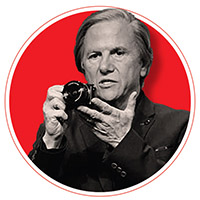 Mike Fasulo
Mike FasuloFor nearly four decades in a dozen different roles including seven years as president and COO of Sony Electronics, Mike Fasulo drove innovation and achieved record profitability while empowering and curating a diverse bench of leaders before diversity, equity, and inclusion were considered strategic imperatives. Known both as Scrappy as well as GSD – Get Stuff (or S__) Done, Fasulo inspired not only Sony but the industry to activate the full measure of talent to achieve better business as well as societal outcomes.
Born in Teaneck, NJ, Fasulo’s work ethic was formed by his hard-working parents, Larry, a bus driver, and Mary, mother to three. Not a stellar student, Fasulo was badly advised by his Hackensack High School counselor to skip college. After two years in construction, Fasulo followed his instincts and enrolled in Rowan University, graduating in 1982 with a BS in finance and accounting.
After two years as controller at a telecommunications startup, Fasulo joined Sony in February 1984 as a junior financial analyst. He soon was made Sony’s first-ever operations manager, helping to create an automated career development and review process. Based on the program’s success, Sony rolled out both operations managers and his career development tool kit nationwide. Sony acknowledged Fasulo’s impact by awarding him its coveted Samurai Award in 1990.
Fasulo relocated to San Francisco from 1989 to 1994 to lead Sony’s northwest region sales team. Then the youngest sales VP in Sony Americas’ history, Fasulo and his team earned the company’s “Region of the Year” award four consecutive years. Back to Sony’s Park Ridge, NJ, HQ as eastern sales VP, Fasulo established a relationship with Circuit City that generated more than $1 billion in revenue.
During a limo ride at CES 1999, Fasulo was promoted to second-in-command for recording media. After replacing the leadership team, Fasulo listened to both employee and customer feedback, and soon transformed the division from worst to Sony Electronics’ second-most profitable entity and was quickly promoted to division president. In 2002, Fasulo was appointed president of Sony E-Solutions, Sony’s segue into e-commerce, Sony retail stores, and the Sony Style branding. Initially seen as a failure, Fasulo quickly turned that business around as well.
In 2005, Fasulo became only the second CMO in Sony’s history, and launched the nationwide HDNA — “High Definition; it’s in our DNA” — marketing campaign to accelerate transition from analog to digital TV. With celebrities boosting the brand, Sony regained the #1 TV market share. In 2010, Fasulo was once again promoted, this time to EVP of overall sales and operations.
On a Friday afternoon in January 2014, Fasulo received a call from his boss in Japan asking to meet with him in San Diego the following Monday for an 8am breakfast. After hanging up, Fasulo said to his wife, Pat, “I’m either getting fired or promoted.” Fasulo was promoted to president and COO of Sony Electronics U.S.
With Sony Electronics losing money, market share, and revenue, Fasulo successfully led another turn-around. The U.S. soon became Sony’s most profitable region.
One of Fasulo’s most rewarding initiatives were the Fast Forward program, designed to engage Sony’s workforce to overcome business challenges in operations and develop a “ready now” strategy so executives would be prepared for their next roles, and his championing and promotion of women executives. Fasulo noted that his varied Sony career “was almost like going to different companies and learning different things. Some say I just can’t keep a job, but I look at it like I’m well-rounded.”
In 2021, Fasulo retired from Sony, becoming an executive advisor.
As president and COO of Sony Electronics, Mike Fasulo drove innovation and achieved record profitability while empowering and curating a diverse bench of leaders.
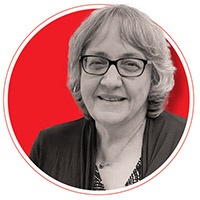 Nancy Klosek
Nancy KlosekNancy Klosek carved out a consumer technology reporting career buoyed by a cheerful disposition that enabled her to establish professional relationships with Japanese and other industry executives through nearly four decades of reporting.
Born in Brooklyn, NY, in 1956, Klosek was the only child of Anthony and Edith, who grew up during The Depression and married in their early 40s. Her father’s mind-expanding interests such as oil painting and working on The New York Times crossword puzzle helped distract him from his factory job; her mother was “a terrific Northern Italian cook” and a full-time homemaker.
Klosek went to Catholic school and then graduated from New York University in 1977 with a B.A. in English and a minor in Journalism. Klosek was one of her high school yearbook editors but her interest in reporting was sparked by Woodward and Bernstein, inspired by how the pair could “dig for facts, piece them together, and move the course of the whole country with their words alone.”
Fresh out of college, Klosek scored a job at the trade magazine Boating Industry, where she met tech journalists Steve Booth and Paul Gluckman. When Booth moved to Audio Times, he recommended adding Klosek to the magazine’s freelance pool. In 1983, Gluckman, who had moved to AudioVideo International (AVI) Magazine, owned by the Tokyo-based publisher Dempa Publications, told Klosek of a full-time job opening, and she was hired. Her initial AVI assignment was covering Philips’ U.S. introduction of its Compact Disc player — her first taste of the fast pace of the consumer tech industry.
Klosek spent the next 21 years at AVI, most of them as the magazine’s managing editor. Over more than three dozen trips to Japan, she developed a deep affinity for Japanese culture, which gave her a unique vantage point from which to report on Japanese brands in the 1980s and early 1990s. Klosek also cultivated enduring relationships with her Japanese colleagues while helping them acclimate to life in America.
Klosek was hired in 2004 as the New York editor for two NAPCO Media publications, Dealerscope and Custom Retailer. She served as the editor-in-chief of Dealerscope from 2014 until her retirement in early 2021. She also served as the editor-in-chief for NAPCO’s Connected Design Magazine, starting in 2017. She is currently a contributing editor for CT Lab Global Media.
For her work, she was presented with Dealerscope’s Powerful Women in Consumer Technology Award (2016) and also its Hall of Fame Award (2021).
Throughout her career, Klosek has considered herself a “sticker.” She lives in the Ridgewood, Queens, NY, home in which she was raised. This “stickiness,” combined with comprehensive reporting while chronicling the consumer technology landscape over the years, has made her a well-liked and respected journalist.
Nancy's comprehensive reporting while chronicling the consumer technology landscape over the years, has made her a well-liked and respected journalist.
 William Bill Pearse & Barbara Barb Pearse
William Bill Pearse & Barbara Barb Pearse
Founders, Ultimate Electronics (1941 – ) (1943 – )
Bill and Barb Pearse built Ultimate Electronics from a single mom-and-pop A/V shop in a Denver suburb into a 65-store behemoth stretching across 14 states from Minnesota to Texas by being the ultimate in selling the newest gear, offering the widest selection, establishing high customer loyalty, and providing excellent customer service.
Bill, born in Ann Arbor, MI, in August 1941, and Barb, born in April 1943, in Minneapolis, MN, both showed early aptitudes for their later career together. Bill started building and flying competitive model airplanes in his teens, while working at a hobby shop. At the age of 10, Barb started working for her father, who ran various Minnesota State Fair restaurants, and at 15 was managing one of them, handling hiring, buying and bookkeeping.
Bill hitchhiked his way to Yellowstone National Park for a summer job in 1962. At the Canyon Village Lodge dining room, Bill saw Barb and knew immediately he would marry her. He arranged to be her bus boy almost every day that summer, and soon discovered the feelings were mutual. By their third summer in Yellowstone, they were engaged and Bill was running Old Faithful Lodge.
After each graduated college in 1965, the pair married, moved to Denver, found jobs, and started saving to buy a consumer electronics franchise. Working as a factory foreman, Bill scoured each new “Franchise” magazine and discovered Minneapolis, MN-based Team Electronics and, on October 12, 1968, with $15,000 they had saved, the Pearses opened a 2,000-square foot franchise outlet in Wheat Ridge, CO.
In 1973, the couple transformed their Team Electronics location into their own SoundTrack store. They credit their exponential growth to hiring their right-hand man, Dave Workman; innovative promotions such as “Buy this stereo system and get a free waterbed!”; and Bill’s founding of the PRO Buying Group.
By 1993, the SoundTrack stores were generating net sales of $53.7 million. The Pearses went public, and combined their outlets under the Ultimate Electronics umbrella. Ultimate’s meteoric growth was due to clever promotions such as “Buy a TV from Ultimate during this NFL season, and if the Broncos win the SuperBowl, we’ll give you a full refund for your TV,” and by maintaining a simplified management style. Everyone carried a copy of Bill’s “Operations Manual,” a two-sided business card that expressed two operating philosophies: “Treat all customers and everyone you work with as you would like to be treated,” and “Use your own best judgement at all times.” For added incentive, the Pearse’s promoted all store managers from within the company.
By 2000, Ultimate Electronics reached its peak sales revenues of $713 million, employing more than 4,000 in upscale 40,000-square-foot stores. The Pearses were the recipients of nearly every retailer award extant, earning the admiration of the industry.
By 2000, Ultimate Electronics reached its peak sales revenues of $713 million, employing more than 4,000 employees in upscale 40,000-square-foot stores.
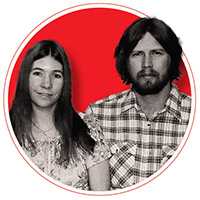 Roberta Williams
Roberta Williams
Co-Founder Sierra On-Line, creator of graphic adventure games (1953– )
Although, her experience with computers was limited, Roberta Williams, a zealous fan of the first adventure game, decided to create her own. With her husband Ken, Roberta co-founded Sierra On-line and created the first graphical adventure game, Mystery House, that pioneered a new industry.
Born February 16, 1953, in Pasadena, CA, her parents encouraged “thinking” games to spark her imagination. In 1971, Roberta, an avid reader of fantasy and fairy tales, married Ken Williams, a “natural tech guy.” Roberta took a job as a typist clerk, then became an IBM 360 computer operator before becoming a beginning COBOL programmer for Lawry’s Foods. Ken worked as an IBM programmer, and Roberta continued to work while raising their children.
Roberta became an obsessive fan of the early text-based PC adventure games such as Colossal Cave. In 1980, the couple gifted each other an Apple II, primarily for Ken to develop a FORTRAN compiler. Roberta was drawing sketches of her own adventure game, a murder mystery inspired by the board game Clue and Agatha Christie’s novel And Then There Were None, with game-play elements gleaned from the text adventure games she enjoyed. Roberta then added her own unique touch: graphics.
Roberta worked on her graphically gothic Victorian murder game for weeks. Knowing Ken was the better programmer, Roberta convinced him to program her game, dubbed Hi-Res Adventure. Ken wrote the software for a VersaWriter, a tablet with a mechanical arm, to digitize Roberta’s hand-drawn images and create the game’s roughly 70 illustrations. He then squeezed the game’s 100-plus game settings and pathways into 59kb to fit on a single 5.25-inch floppy disk.
To sell the game, the pair founded On-Line Systems in May 1980. Priced at $24.95 and packaged in a Ziploc bag with photocopied instructions, the Williamses placed ads in computing magazines and demonstrated the game, titled Mystery House, at local computer shops. They sold more than 80,000 copies, making it a best-selling phenomenon.
Capitalizing on this success, Roberta created, and Ken coded The Wizard and the Princess later that year, the first full-color computer game that sold more than 100,000 copies. Princess later spawned Sierra’s King’s Quest series, which sold more than seven million copies.
Now renamed Sierra On-line, the Williamses established offices in Oakhurst and attracted enthusiastic programmers and artists/animators. In 1988, Roberta created King’s Quest IV: The Perils of Rosella. Featuring the first female lead in a computer game, Rosella sold 100,000 copies in its first two weeks, which led to a series of Sierra female-centric adventures. In 1995, Sierra released Phantasmagoria, the first live-action video game. Featuring two dozen real actors placed against computerized 3D backdrops, Phantasmagoria, packaged on seven CD-ROMs, cost $4.5 million to produce but made $12 million to become the country’s top-selling game.
In 1996, the Williams’ sold Sierra On-line, and Roberta became a legendary figure of her own.
Roberta co-founded Sierra On-line and created the first graphical adventure game, Mystery House, that pioneered a new industry.
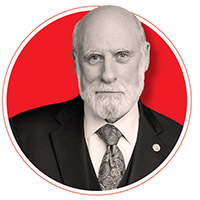 Vinton Gray “Vint” Cerf
Vinton Gray “Vint” Cerf
Co-Inventor of TCP/IP; “Father of the Internet” (June 23, 1943 – )
Along with Bob Kahn, Vint Cerf has been dubbed “Father of the Internet.” He and Kahn led the development of TCP/IP (Transmission Control Protocol/Internet Protocol), the fundamental communications protocols that determine how data is packaged, addressed, transmitted, routed and received over the Internet.
Born in New Haven, CT, on June 23, 1943, to Muriel and Vinton T. Cerf, the family moved to Southern California when he was three. While attending Van Nuys High School, Cerf worked at Rocketdyne on the Apollo program, helping to write statistical analysis software. After earning a mathematics degree from Stanford in 1965, Cerf worked for IBM in Los Angeles as a systems engineer on the company’s Quiktran computer time-share operating system.
Cerf left IBM in 1967 to pursue advanced degrees at UCLA, earning a master’s in 1970 and his Ph.D in 1972. While at UCLA, Cerf worked with the pioneering networking group that connected the first four nodes of the ARPANET, the network initiative of the U.S. Department of Defense’s DARPA (Defense Advanced Research Projects Agency), and first worked with Bob Kahn, who later initiated DARPA’s Internet project. In 1972, Kahn organized a successful public demonstration of the new ARPANET system, which Cerf had spent the summer working on. Cerf returned to Stanford as an assistant professor that fall when Kahn recruited him to help develop a replacement for ARPANET’s Network Control Program (NCP) host protocol.
What was needed was a robust but “open” packet-switching architecture that would work on any computer, mobile or fixed, on any network running any operating system, and that didn’t rely on a single control component or point of failure — failing to find one clear path through the network, encrypted data would be automatically re-routed to reach the intended destination. Within a year, the pair and their team had developed the Transmission Control Protocol (TCP), which became a fundamental protocol of the internet. In 1974, Cerf and Kahn co-published the first description of the TCP protocol, A Protocol for Packet Network Intercommunication.
In 1976, Cerf officially joined Kahn at DARPA in Washington, D.C., where the pair led TCP’s refinement. By 1983, TCP — now known as TCP/IP — was adopted for both ARPANET and other military communication systems. Over the next decade, TCP/IP was adopted by corporate and academic users as well as PC makers, becoming the default digital communications standard and making the internet possible.
In 1982, Cerf left DARPA to become VP of Digital Information Services for MCI, where he led the development of MCI Mail, the first commercial email service connected to the internet. Four years later, he re-joined Kahn, who had founded the Corporation for National Research Initiatives, where the pair worked on digital libraries, robots and gigabit networks. In 1992, Cerf and Kahn helped co-found the Internet Society (ISOC), and Cerf served as its first president. He rejoined MCI as SVP of Technology Strategy in 1994. Both Cerf and his wife, Sigrid, are hearing-impaired; in 1997, he joined the board of trustees at Gallaudet University for deaf and hearing-impaired students.
Cerf helped found and fund ICANN (Internet Corporation for Assigned Names and Numbers) and served on the organization’s board from 1999 to 2007, serving as chair from 2000. In 2005, Cerf joined Google as VP and Chief Internet Evangelist, and from 2013–2016, he served on the President’s National Science Board.
Cerf and Kahn have been continually honored for their contributions; in 2004, the pair was awarded the Turing Award, and a year later, the Presidential Medal of Freedom.
Vint Cerf has been dubbed “Father of the Internet.
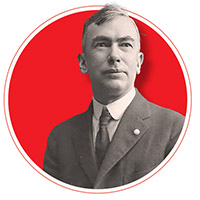 Frank Conrad
Frank Conrad
Radio Pioneer; Designed First Consumer Electronics Product (May 4, 1874 - December 11, 1941)
During his lifetime, Frank Conrad was referred to as “the father of commercial radio” for his seminal role in launching KDKA in Pittsburgh, the first “commercial” radio station. Conrad also designed the RA-DA, the first factory-produced mass market radio — essentially, the first consumer electronics product — in November 1920.
Born May 4, 1874, in Pittsburgh, when he was 16, he went to work for Westinghouse as a bench-hand. In 1897, he was promoted to the company’s testing department, then to general engineer in 1904.
Conrad’s interest in radio was sparked in 1912 by a $3 bet with a co-worker about who owned the most accurate watch. To prove his claim, Conrad built a crude receiving set to pick up time signals transmitted by the Naval Radio Station in Arlington, VA. Conrad also built his own wireless station and lab in his garage. After the U.S. entered the first World War in April 1917, Conrad was recruited by the government to develop wireless equipment for the military.
After the war ended, on Friday night, October 17, 1919, he transmitted opera, jazz and orchestral music for two hours. He was soon transmitting regular Saturday night “radiophone” concerts. By the spring of 1920, his concerts could be tuned into from 600 miles away. Conrad also was developing his new home receiver, and applied for patents on his tuning and antennae technologies in 1920.
Conrad’s broadcasts became so popular that on September 29, 1920, a Pittsburgh department store, Joseph Horne, ran an “ad” touting Conrad’s concerts and $10 radio sets that could be bought to tune-in. The ad caught the eye of Westinghouse VP Harry Phillips Davis, who asked Conrad if he could build an even more powerful transmitting station on the roof of Westinghouse’s Pittsburgh headquarters.
At 8pm on November 2, 1920, Westinghouse’s newly-named KDKA started broadcasting returns of the Warren Harding-James Cox U.S. presidential election. But Conrad was manning his own rig in his garage as a back-up in case the main station failed.
With the success of the broadcast, Westinghouse manufactured Conrad’s two-piece RA-DA home radio receiver — one cabinet containing the tuner, the second a detector and a two-stage audio amplifier. The RA-DA was powered by a rechargeable lead acid battery, and was equipped with three headphone jacks — there was no speaker. Each piece was priced at $65, about $1,670 in today’s dollars for both pieces. The first production run at Westinghouse’s Shadyside Works in Pittsburgh produced about 1,400 RAs and 1,600 DAs, the first sets coming off the line on November 30, 1920, with production shifting to Westinghouse’s Electric Home Appliance Division in East Springfield, MA. A combined 144,000 of Conrad’s creation were sold over two years, launching the age of mass communications.
As assistant chief engineer of Westinghouse, Conrad continued his pioneering work in shortwave radio. He received numerous honorary degrees and awards, including a Doctor of Science from the University of Pittsburgh in 1928, and over 200 patents during his 51-year Westinghouse career.
Frank Conrad was referred to as “the father of commercial radio” for his seminal role in launching KDKA in Pittsburgh, the first “commercial” radio station.
 Peter M. Fannon
Peter M. FannonAdmittedly, he didn’t know much about the new-fangled “HDTV.” But thanks to his management and tested political skills, Peter Fannon successfully organized and led the Advanced Television Test Center (ATTC), helping to develop HDTV. Fannon then served as Panasonic’s lead lobbyist in Washington, D.C. Between these and other prominent positions, Fannon became one of the most influential and ubiquitous figures in the consumer technology industry for four decades.
Born in Delaware, his father, Marcy, was an aeronautical engineer and airline executive. The family settled in Bronxville, NY, where his mother, Betty, co-owned a real estate firm. As a 1950s baby boomer, Fannon was hooked on the magic of TV during its transitions from monochrome to color, and from live to taped programming. He was his high school’s “accredited” AV aide when local New York TV personalities gave school presentations.
After spending his senior year in high school in Malmö, Sweden, via the AFS Student Exchange program, Fannon earned his AB and MA degrees in international relations from Johns Hopkins University’s School of Advanced International Studies, studying in Bologna, Italy, and Washington, D.C. While in school, Fannon made his first White House visits as a D.C. tour guide.
Fannon joined the General Services Administration (GSA) after graduation, then the Office of Management & Budget (OMB), working on communications agencies’ budgets, D.C. “Home Rule” activities and U.S. Bicentennial plans. He helped draft the first long-term funding authorization for CPB/public broadcasting (1975) and the legislation establishing NTIA/National Telecommunications & Information Administration (1977). Fannon became PBS’s first director of planning in 1977, proposing new program networks and advancing new technologies including closed captioning, stereo audio and satellite networking. In 1980, he moved over to launch the National Association of Public Television Stations (NAPTS), where he helped lobby against administration cuts to CPB funding and fought for cable carriage for public TV stations.
In 1988, Fannon got a call from NAB VP John Abel about leading the just-chartered ATTC. While Fannon was not a TV engineer, his government, TV broadcasting and technical experience was a unique combination. As ATTC president, Fannon helped raise funding, hired technical staff, and developed the purpose-built testing lab in Alexandria, VA. Then, under the aegis of the FCC’s Advisory Committee, he helped pull together the often-contentious broadcast, government, TV manufacturer and technology constituencies to design the tests of the competing “advanced television system” proposals. Winnowed down from 21 proposals, six systems were tested. After two withdrew, the backers of the remaining four systems formed the Grand Alliance, combining the best aspects of each, helped by some ATTC sub-component “bake-offs” tests. Based on GA tests, the FCC adopted the new “digital HDTV standard” on Christmas Eve 1996. ATTC was awarded an Emmy for its work.
With the testing done, Fannon revived his “theater career,” singing and dancing in the musical “1776” as Richard Henry Lee, with several of the other Founding Fathers portrayed by members of Congress.
To help implement HDTV, Fannon joined Panasonic as VP of corporate and government affairs.
Over the next 21 years, he helped promote the broadcast digital and HDTV transition and the new HDTV products, especially plasma flat-screen TVs. Fannon also managed Panasonic’s environmental, product safety, regulatory compliance, communications and community outreach activities, before retiring in 2018.
Over the years, Fannon chaired or served on many CTA boards and committees, and was a “Visionary” contributor to the CTA PAC since its founding.
Peter Fannon successfully organized and led the Advanced Television Test Center (ATTC), helping to develop HDTV.
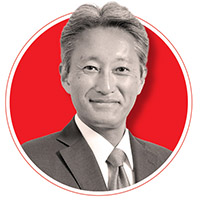
President and CEO, Sony Corp. (December 22, 1960 – )
Through passion, hard work, prescient business acumen and a strong love of products and content, Kazuo Hirai began with Sony in 1984 and ultimately rose to the role of president and CEO, from April 2012 to March 2018. He is known for taking the reins during a challenging time for the company and, over the course of his tenure, turning it around with his “One Sony” strategy, into an innovation powerhouse, and hands-down leader across multiple product categories. His charisma, leadership and results earned him a spot-on Entertainment Weekly’s list of the most influential and intellectual executives globally.
Born December 22, 1960 in Tokyo, Japan, the son of a banker, Hirai spent many of his years growing up living in New York, Toronto and California. He developed a strong interest in electronics products, which influenced his future success in business.
In 1984, after graduating with a liberal arts degree from the International Christian University in Japan, Hirai took a role with CBS/Sony Inc. (now Sony Music Entertainment (Japan) Inc.) where he assisted in the marketing of international music in Japan. Hirai was in his element and rapidly rose through the ranks moving to New York to lead the marketing of Sony Music Japan artists within the U.S. While in New York, he assisted the 1995 launch of the PlayStation® console by Sony Computer Entertainment America (SCEA), subsequently becoming the executive vice president of SCEA in 1996, and president in 1999. Under Hirai’s leadership, the SCEA division blossomed and retained strong revenue growth for nearly a decade.
His success in the U.S. brought him back to Tokyo in 2006, when Hirai was elevated to president and COO of Sony Computer Entertainment Inc. (SCEI), and soon after, lead Sony’s entire game business as CEO. Hirai’s successes mounted as he accumulated additional responsibilities and leadership roles in Sony Corp., as president of Consumer Products & Services Group, in tandem with SCEI, overseeing Sony’s entire portfolio of consumer electronics products and digital networked services. In April 2012, Hirai was appointed president and CEO of Sony Corp.
Widely respected for his facile understanding of a fast-changing digital world, Hirai’s status as a visionary in the industry was cemented through his marketing of international music with Sony Music Entertainment, his successful leadership of the evolving PlayStation business, and a masterful integration and innovation between Sony’s multiple electronics products and services. He passionately encouraged many new business incubation initiatives including iconic robotics like Aibo. Consequently, Hirai successfully turned around Sony’s business with record-high profits in FY2018.
Lauded for his innovation, leadership and vision, Hirai received the Lifetime Achievement Award from The National Academy of Television Arts & Sciences (NATAS) at the 66th Annual Technology & Engineering Emmy Awards on January 8, 2015, at CES. In 2017 Variety profiled Hirai as part of its Variety500 Honoree list.
In 2018, after six years as president and CEO, Hirai stepped down, to be replaced by then-CFO Kenichiro Yoshida, who now serves as chairman, president and CEO of Sony Corp. Hirai actively assisted in a smooth leadership transition to Yoshida and has voiced strong support for his successor. Although not serving actively in a formal role, Hirai remains an on-call senior advisor to the company.
Hirai successfully turned around Sony’s business with record-high profits in FY2018.
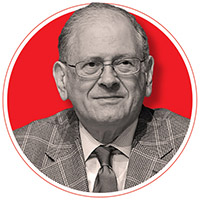 Robert Elliot Bob Kahn
Robert Elliot Bob KahnA long with Vint Cerf, Bob Kahn has been dubbed “Father of the Internet.” Kahn and Cerf led the development of TCP/IP (Transmission Control Protocol/Internet Protocol), the fundamental communications protocols that determine how data is packaged, addressed, transmitted, routed and received over the internet.
Kahn was born December 23, 1938, in Brooklyn, NY. Kahn’s father helped design a record-keeping database, which may have influenced his son’s career. With an interest in mathematics and communications, Kahn enrolled in Queens College – now part of the City College of New York. After graduating with a degree in electrical engineering in 1960, Kahn took a job at Bell Labs at its West Street headquarters in lower Manhattan, where he first encountered a computer. Kahn soon received an NSF fellowship and enrolled at Princeton, earning his electrical engineering master’s and Ph.D degrees, then was accepted for a post-doctoral fellowship and assistant professorship at MIT.
In 1966, Kahn joined the pioneering R&D firm BBN, helping to write the proposals to work on ARPANET (Advanced Research Projects Agency Network), the computer network initiative of the U.S. Department of Defense’s DARPA (Defense Advanced Research Projects Agency) project.
While working on four nodes of the nascent ARPANET for BBN, Kahn met Vint Cerf, who was working in a networking group at UCLA that had connected the first two nodes of the network. Kahn then officially joined Information Processing Techniques Office (IPTO) within DARPA in Washington, D.C., in 1972, and organized a successful public demonstration of the new ARPANET system. Kahn then recruited Cerf to help develop a replacement for ARAPNET’s Network Control Program (NCP) host protocol.
What was needed was a robust but “open” packet-switching architecture that would work on any computer, mobile or fixed, on any network running any operating system, and that didn’t rely on a single control component or point of failure — failing to find one clear path through the network, encrypted data would be automatically re-routed to reach the intended destination. Within a year, the pair and their team had developed the Transmission Control Protocol (TCP), which became a fundamental protocol of the internet. In 1974, Cerf and Kahn co-published the first description of the TCP protocol, A Protocol for Packet Network Intercommunication.
While at DARPA, Kahn worked on end-to-end security, packet radio, packetized speech technology, the precursor to VoIP, and several other network aspects, and soon appointed chief scientist and deputy director. In 1976, Cerf officially joined Kahn at DARPA, where the pair worked for six years on TCP’s refinement. By 1983, TCP — now known as TCP/IP — was adopted for both ARPANET and other military communication systems. Over the next decade, TCP/IP was adopted by corporate and academic users as well as PC makers, becoming the default digital communications standard and making the internet possible.
In 1979, Kahn became director of IPTO, initiating and leading the billion-dollar Strategic Computing Initiative to help develop machine intelligence. Kahn left DARPA in 1986, and founded the non-profit Corporation for National Research Initiatives (CNRI), where he has continued to serve as chairman, CEO and president. In 1992, Kahn and Cerf, also representing CNRI, helped co-found the Internet Society (ISOC).
Kahn and Cerf have been continually honored for their contributions; in 2004, the pair was awarded the Turing Award, and a year later were awarded the Presidential Medal of Freedom.
Bob Kahn has been dubbed “Father of the Internet.
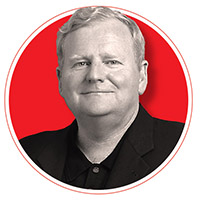 James E. Jim Meyer
James E. Jim MeyerAs an executive at RCA/GE, Thomson and SiriusXM, Jim Meyer has been a prominent presence in the development, promotion and success of some of the most innovative and much-loved consumer technologies of the last 40 years.
He was born on October 27, 1954, in Boston to Margaret and U.S. Navy Admiral Wayne Meyer. His father an engineer by training, passed on to his son the message of the power of engineering. Rather than pursue a military career, Meyer was intrigued by building things and how they worked.
After earning his bachelor’s degree in economics at St. Bonaventure in 1976, Meyer got a job as a financial analyst for a division of RCA outside Washington, D.C. Except Meyer was too diligent. After writing a report that eliminated two-thirds of his own job, he returned to St. Bonaventure to earn his MBA in 1979. Meyer then returned to RCA in the company’s consumer electronics division in Indianapolis. Working on the operations side of the business, Meyer managed the company’s capital budget while learning how products were made, and found he was keenly interested in consumer electronics.
In 1985, Meyer met Joe Clayton (CTA HoF 2008), then the new VP of marketing operations, who became both a friend and mentor. Meyer had moved into sales. In 1988, RCA/GE was sold to French conglomerate Thomson, which forced Meyer to adopt a more global sales and product philosophy. In 1989, he became SVP of product management with oversight of TVs, VCRs, camcorders, cordless phones and a range of audio products.
In 1990, RCA Thomson approached Eddy Hartenstein (CTA HoF 2008), president of GM’s Hughes division, about a new high-powered satellite TV system. Meyer and Clayton, believed it would vastly change the consumer experience and it was important to take a leadership role in the technology. Meyer said to Clayton, “Let’s bid on that business.” Within seven months of DirecTV’s launch in June 1994, RCA Thomson had sold one million systems.
Soon after DirecTV launched, Meyer got a call from Warner Home Video chief Warren Lieberfarb (CTA HoF 2008). The pair discussed the idea of putting movies on optical disc, a technology for which RCA owned important patents. DVD would storm the market in 1997, and Meyer helped oversee the launch in the U.S.
In 2003, Meyer got another call from Clayton, now CEO of the nascent Sirius Satellite Radio. “What do you know about satellite radio?” Clayton asked. Meyer replied, “I think it is the stupidest idea, why would people pay for radio?” Clayton then implored Meyer, “Jim, you need to come help me!” After only a week at Sirius, Meyer was infatuated with the product.
At the time, Sirius had 60,000 subscribers. Meyer established the vital relationships with after-market retailers and with automakers to install satellite radios. The hiring of Howard Stern in 2004 was a landmark move for Sirius, which was in a pitched battle with competitor XM. In 2008, Meyer was instrumental in combining Sirius with XM to form SiriusXM. After serving as interim, he was named permanent CEO in 2013. By 2020, Sirius XM had grown to more than 38 million subscribers and become the leading audio entertainment company in the U.S. Meyer retired from SiriusXM on Dec. 31, 2020. He also serves on the board of Charter Communications.
In 2008, Meyer was instrumental in combining Sirius with XM to form SiriusXM.
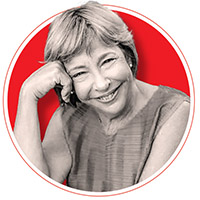 Robin Raskin
Robin Raskin
Journalist, founder Living in Digital Times (1954 – )
Robin Raskin has always been a translator between the tech sphere and the rest of the world. After 20 years as a pioneering consumer technology journalist, editor, and children and internet safety expert, Raskin wanted to try something new. Living in Digital Times, founded in 2006 now is an integral and popular 15-event conference/exhibit series at CES.
Born in The Bronx on May 14, 1954, she is the eldest of four children of Frances Kfare and Lester Raskin, a lawyer. Growing up in Queens, her father demanded his children recite current events or no dinner, and report on three new dictionary words each Sunday. She described herself as being “toilet trained with a book in my hand.” A number of writing awards in school put the communications bug in her ear.
While earning her BA at Franklin & Marshall College in the mid-1970s, she learned about audio by attending rock concerts with her roadie boyfriend. After college, she married Kaare Christian, a computer graphics engineer at New York Institute of Technology (NYIT). Their early dates involved learning to wire wrap circuit boards and watching mainframe computers construct images pixel-by-pixel. As a wedding gift, the president of NYIT awarded Raskin a scholarship and a keyboard connected to the school’s DEC VAX, and her husband taught her UNIX VI, NROFF and TROFF. These experiences led to her first technology freelance writing gig in 1979, earning $25 from InfoWorld for “How I Learned About Computers to Save Our Marriage,” which encouraged women to learn about then new home computers.
A mother of three, Raskin freelanced, writing about computers and printers for Scholastic’s Home Office PC, PC Magazine, Computer Shopper, and numerous others. Once her children were in school, she joined PC Magazine as senior editor, promoted to editor in 1990. Raskin left PC Magazine to found FamilyPC, a joint venture of Disney and Ziff Publishing, to provide guidance to families grappling with new tech. She also wrote tech pieces for national publications such as USA Today, Yahoo!, Good Housekeeping, Redbook and Elle, and wrote and edited six books on kids and family technology.
Raskin also served on the National Academy of Sciences committee on kids’ safety on the internet, and testified before various Congressional committees regarding the Children’s Online Privacy Protection Act (COPPA). She won numerous awards, and was a frequent visitor to the White House during the Clinton Administration as part of a women’s delegation of magazine editors.
In 2006, she approached CTA President and CEO Gary Shapiro about creating a series of CES conferences. The conference and exhibit area were devoted to Kids and Families in 2007. As the events grew in popularity, Raskin added more events, including Baby Tech, Digital Health, Fitness Tech, Digital Money, High Tech Retailing, and some fun events, like The Last Gadget Standing and FashionWare.
Living in Digital Times continued to grow at the Sands Expo and Convention Center. In 2019, CTA purchased Living in Digital Times, and Raskin and her team continue to consult. Her new company, Solving for Tech, amplifies the message that technology and innovation needs to be understood, deployed and shared by all.
Raskin is a pionering consumer technology journalist, editor, and children and internet safety expert.

I3, the flagship magazine from the Consumer Technology Association (CTA)®, focuses on innovation in technology, policy and business as well as the entrepreneurs, industry leaders and startups that grow the consumer technology industry. Subscriptions to i3 are available free to qualified participants in the consumer electronics industry.